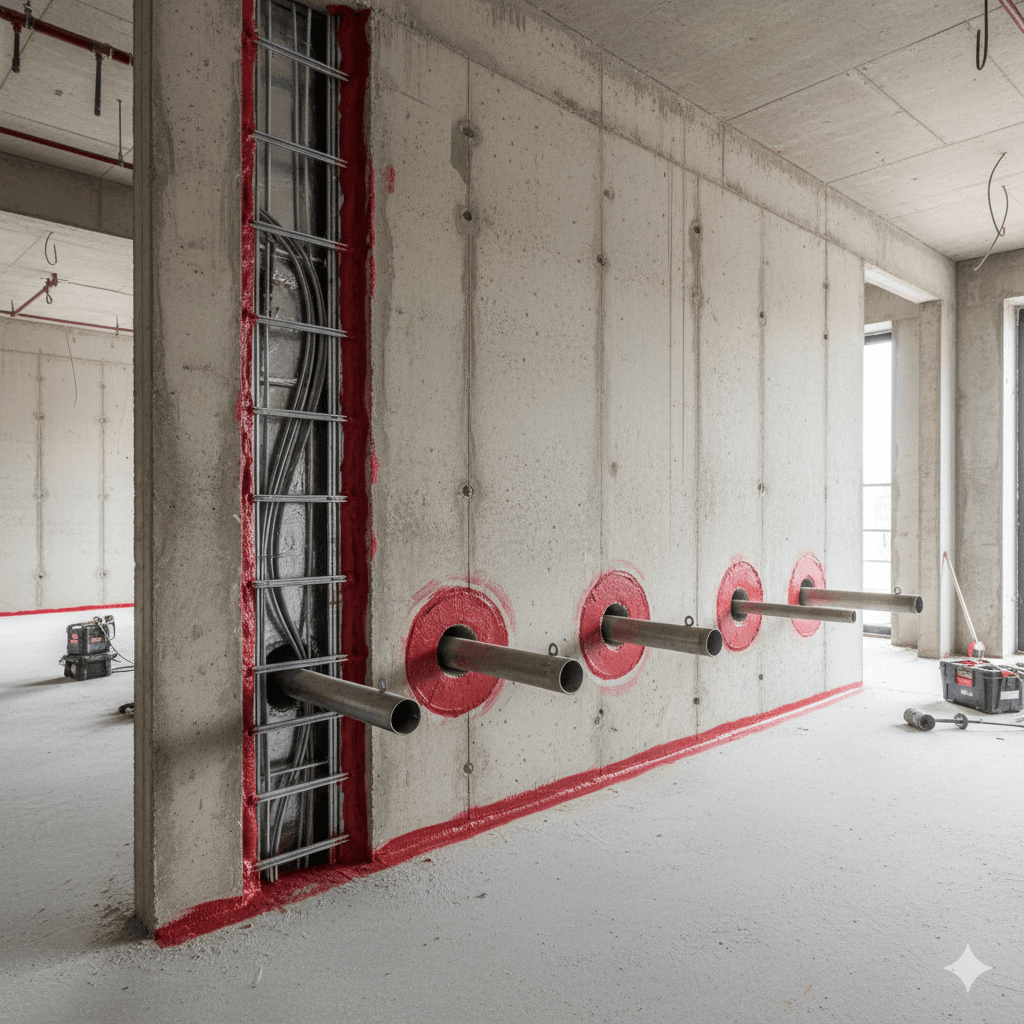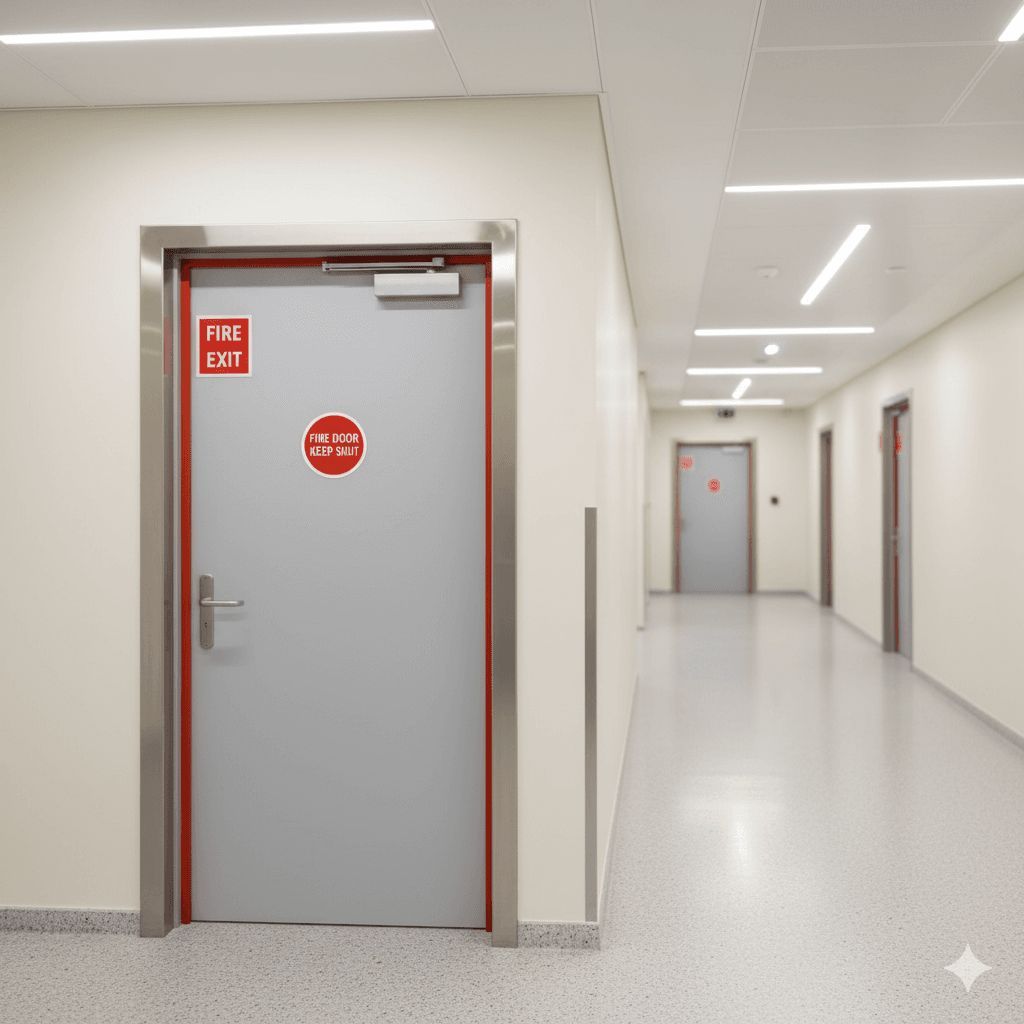When it comes to keeping people and property safe, fire safety is more than just an afterthought. Every building, whether commercial, residential, or public, must be designed and maintained with a clear fire strategy in place. At the heart of this is passive fire protection, an essential yet often overlooked part of building safety. But what exactly does it mean, and why is it so important?
Understanding Passive Fire Protection
Passive fire protection refers to the systems, materials, and construction methods used to contain fire and smoke in a building. Unlike active measures such as alarms or sprinklers, passive fire protection works in the background. It focuses on slowing down the spread of flames and smoke by dividing a property into compartments.
These measures ensure that if a fire does break out, it remains contained long enough for people to escape safely and for emergency services to intervene.
Examples include:
- Fire-resistant walls, floors, and ceilings
- Fire doors that block flames and smoke
- Fire stopping around cables, pipes, and ducts
- Barriers in concealed spaces to stop fire spreading unnoticed
By maintaining compartmentation, passive fire protection protects lives and limits structural damage.
Why Passive Fire Protection Is Essential
Every building needs passive fire protection because it provides multiple, non-negotiable benefits:
- Life safety: It buys crucial time for safe evacuation.
- Regulatory compliance: It ensures adherence to fire stopping regulations UK building standards demand.
- Asset protection: By limiting the spread, it prevents catastrophic damage and business downtime.
- Insurance requirements: Many insurers require compliant passive fire protection systems.
Put simply, without it, even the best alarms or suppression systems are not enough to ensure safety and compliance.
How Passive Fire Protection Fits Into Your Fire Strategy
A building’s fire strategy is the blueprint for how it manages fire risks. Passive fire protection is a key element of this, ensuring that the structure itself supports safe evacuation and containment.
Whether you are a facilities manager, developer, or landlord, integrating these measures into your fire strategy isn’t just recommended. It is a legal requirement. This includes initial installation as well as regular inspections and remedial works to keep everything compliant over time.
The Role of Fire Stopping in Compliance
One of the most important aspects of passive fire protection is fire stopping. This involves sealing every joint, gap, and penetration where services such as pipes or cables pass through fire-rated walls, floors, or ceilings.
Even small openings can allow flames and smoke to travel quickly, undermining the entire fire safety system. By using tested fire-resistant materials, fire stopping maintains the integrity of compartments and ensures compliance with fire stopping regulations UK standards demand.
Without professional fire stopping, a building’s fire strategy cannot be fully effective.
Why Choose Zyan Fire Protection?
With so many contractors offering similar services, what makes Zyan Fire Protection stand out?
- Certified expertise: Our team holds BM Trada certification, giving you complete confidence in the quality of our work.
- Independent advice: We operate independently of manufacturers, so our solutions are impartial and tailored to your building’s needs.
- Full compliance support: From initial surveys to installation and final certification, we provide complete documentation for insurers, landlords, and regulatory authorities.
- Fast turnaround: We pride ourselves on prompt communication and a one-day quote turnaround, keeping your project moving.
- Proven track record: Since 2020, we’ve successfully delivered fire protection projects across London, working with commercial properties, healthcare facilities, housing associations, schools, and more.
Choosing Zyan Fire Protection means choosing a partner who explains the technical details clearly, removes the jargon, and ensures your building is both safe and compliant.
Conclusion
Passive fire protection is the backbone of building fire safety. It prevents fire and smoke from spreading, safeguards lives, and keeps properties compliant with strict regulations. From fire stopping to fire doors and barriers, every building relies on these hidden systems to function effectively in an emergency.
For building managers, landlords, and developers, investing in certified passive fire protection is not optional, it is essential.
FAQs
1. What is the difference between passive fire protection and active fire protection?
Active fire protection includes systems like alarms and sprinklers that activate in response to fire. Passive fire protection focuses on containment and structure, working quietly in the background to stop fire and smoke spreading.
2. How often should passive fire protection systems be inspected?
Regular inspections are vital. Fire doors, barriers, and fire stopping should be assessed during routine fire risk assessments or after building works that may compromise them.
3. Is passive fire protection required by law?
Yes. UK building regulations require that all buildings incorporate effective passive fire protection measures. Compliance with fire stopping regulations UK standards is mandatory for safety and legal reasons.
Ready to make your building safer and fully compliant?
Contact Zyan Fire Protection today for a free site survey and expert advice on passive fire protection tailored to your property.


